Related Research Articles

The No. 2 Construction Battalion, Canadian Expeditionary Force (CEF), was raised in Nova Scotia and was one of two predominantly Black battalions in Canadian military history and the only Canadian battalion composed of Black soldiers to serve in World War I. Commanded by Lieutenant Colonel Daniel Hugh Sutherland, formerly of the 193rd Battalion, CEF.

The Queen's Own Rifles of Canada is a Primary Reserve regiment of the Canadian Armed Forces, based in Toronto. The regiment is part of 4th Canadian Division's 32 Canadian Brigade Group. It is the only reserve regiment in Canada to currently have a parachute role. The regiment consists of the reserve battalion, the Regimental Association, and the Regimental Band and Bugles. The official abbreviation is The QOR of C, but the name is often abbreviated to QOR.
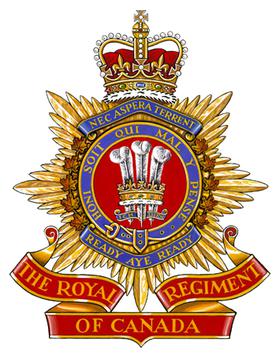
The Royal Regiment of Canada is a Primary Reserve infantry regiment of the Canadian Army. The regiment is based in Toronto, Ontario, and forms part of the 4th Canadian Division's 32 Canadian Brigade Group.

The Canadian Grenadier Guards (CGG) is a reserve infantry regiment in the 34 Canadian Brigade Group, 2nd Canadian Division, of the Canadian Army. The regiment is the oldest and second-most-senior infantry regiment in the Primary Reserve of the Canadian Army. Located in Montreal, its main role is the provision of combat-ready light infantry troops in support of Canadian regular infantry. It is a Household Foot Guard regiment and also provides soldiers for public ceremonial duties, performing similar ceremonial duties as the Guards regiments of the British Army. This primarily entails mounting the guard at Government House, the King's and Governor General's residence, and performing the "Changing the Guard" ceremony on Parliament Hill in Ottawa, a task it shares with Canada's senior Household Foot Guard regiment, the Governor General's Foot Guards of Ottawa. The Canadian Grenadier Guards is an allied regiment to the British Grenadier Guards.

The Royal Hamilton Light Infantry (Wentworth Regiment) (RHLI) is a Primary Reserve infantry regiment of the Canadian Army, based at John Weir Foote VC Armoury in Hamilton, Ontario. The RHLI is part of 31 Canadian Brigade Group, which is part of 4th Canadian Division.
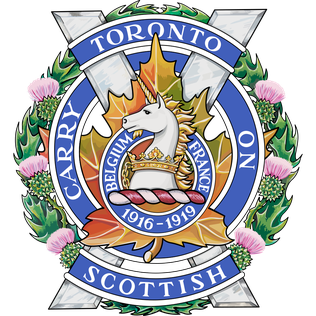
The Toronto Scottish Regiment (Queen Elizabeth The Queen Mother's Own) is a Primary Reserve infantry regiment of the Canadian Army based in Toronto, Ontario, Canada. The regiment was first formed in 1915 as the 75th (Mississauga) Battalion, CEF, and was later reorganized several times before being officially designated as The Toronto Scottish Regiment (Queen Elizabeth The Queen Mother's Own).
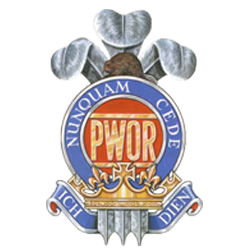
The Princess of Wales' Own Regiment (PWOR) is a Primary Reserve infantry regiment of the Canadian Army.
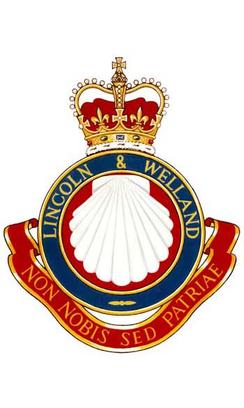
The Lincoln and Welland Regiment is a Primary Reserve infantry regiment of the Canadian Army based in St. Catharines, Ontario.

The Grey and Simcoe Foresters is a Primary Reserve infantry regiment of the Canadian Forces. Within the Canadian Army, it is part of the 4th Canadian Division's 31 Canadian Brigade Group. Due to the restructuring of the British Army, The Worcestershire and Sherwood Foresters Regiment was amalgamated into The Mercian Regiment, as its 2nd Battalion, leaving The Grey and Simcoe Foresters as the only remaining unit in the Commonwealth of Nations known to be distinctly designated as a regiment of Foresters.

The Lorne Scots is a Primary Reserve infantry regiment of the Canadian Army. It is part of the 4th Canadian Division's 32 Canadian Brigade Group.
The 194th Battalion, CEF, was a unit in the Canadian Expeditionary Force during the First World War. Based in Edmonton, Alberta, the unit began recruiting during the winter of 1915/16 in that city and surrounding district. After sailing to England in November 1916, the battalion was absorbed into the 9th Reserve Battalion on January 21, 1917. The 194th Battalion, CEF, had one officer commanding: Lieutenant-Colonel W. C. Craig.
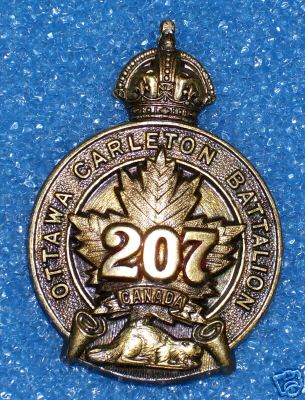
The 207th (Carleton) Battalion, CEF was a battalion of the First World War Canadian Expeditionary Force.
The 123rd Battalion, Royal Grenadiers, CEF was a unit in the Canadian Expeditionary Force during the First World War. Based in Toronto, Ontario, they began recruiting in November 1915. After arriving in England, they continued to train as an infantry battalion for several months, but just before mobilizing to France in January 1917, the battalion was redesignated the 123rd Pioneer Battalion, Royal Grenadiers, CEF.
The 147th (Grey) Battalion, CEF was a unit in the Canadian Expeditionary Force during the First World War, raised by the 31st Grey Regiment.
The 157th Battalion, CEF was a unit in the Canadian Expeditionary Force during the First World War.
The 218th Battalion, CEF, was a unit in the Canadian Expeditionary Force during the First World War. Based in Edmonton, Alberta, the unit began recruiting in early 1916 in that city.

The 87th Battalion, CEF was a Household Foot Guards infantry unit in the Canadian Expeditionary Force during the First World War.
The Peel and Dufferin Regiment was an infantry regiment of the Non-Permanent Active Militia of the Canadian Militia. First organized in 1866 as the 36th Peel Battalion of Infantry, the regiment was reorganized in 1900 as the 36th Peel Regiment. Following the First World War, the regiment was reorganized again in 1920 as The Peel Regiment and for the final time in 1923 as The Peel and Dufferin Regiment. In 1936, the regiment was Amalgamated with The Lorne Rifles (Scottish) to form The Lorne Scots.
The 86th Battalion, CEF was an infantry battalion of the Canadian Expeditionary Force, which was raised for overseas service during World War I. Authorized on December 22, 1915, the battalion embarked for Britain in May 1916. Based at Shorncliffe, the battalion was reorganized as the Canadian Machine Gun Depot, CEF and provided reinforcements for Canadian units in the field until it was disbanded on 1 September 1917. It is believed to have been "the first of its kind in the British Empire."
The Toronto Regiment was an infantry regiment of the Non-Permanent Active Militia of the Canadian Militia. The regiment was formed in 1920 when the war-raised 3rd Battalion of the Canadian Expeditionary Force was incorporated after the First World War into the post-war Canadian Militia. In 1936, the regiment was amalgamated with The Royal Grenadiers to form The Royal Regiment of Toronto Grenadiers.
References
Footnotes
- ↑ Toronto Star - January 30, 1917
- ↑ Toronto Star - March 22, 1917, and May 19, 1917
- ↑ "William Herbert Price". Library and Archives Canada. Archived from the original on 2012-10-07. Retrieved 2009-03-13.
- ↑ Toronto Star - March 16 & 17, 1917
- 1 2 Toronto Star - March 19, 1917
- ↑ "Ernest George Switzer". Library and Archives Canada. Archived from the original on 2012-10-07. Retrieved 2009-03-13.
- ↑ Toronto Star - July 24, 1917
- ↑ Toronto Star - June 7, 1919
- ↑ Each former 204th man listed on the 204th Memorial Plaque also has a memorial tribute on the Canadian Virtual War Memorial which lists Canada's war dead. A photo of this plaque has been placed next to the name of each 204th man named on the Canadian Virtual War Memorial Site. Additional biographical information may be found at this source.
Bibliography
- Meek, John (1971). Over the Top! The Canadian Infantry in the First World War. Orangeville, Ontario: Self-published.